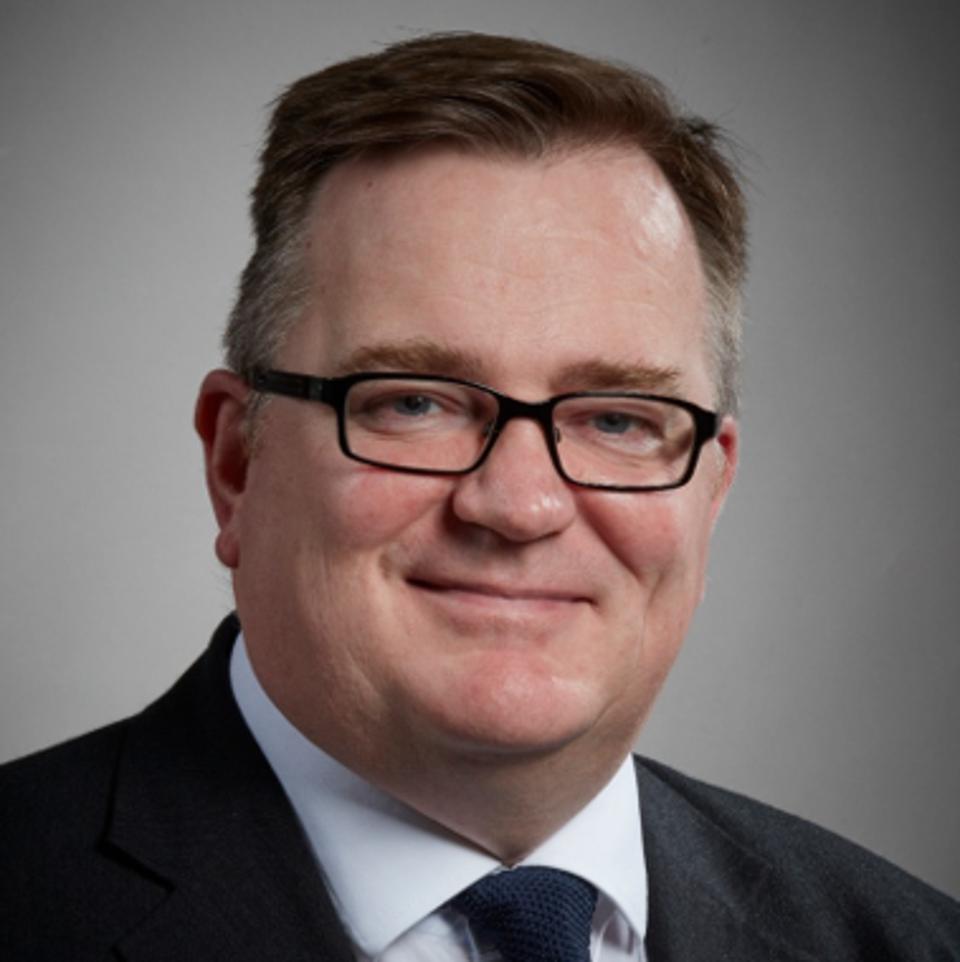How Peter Ford has transformed the commercial model one step at a time.

Growth
getty
Our team of experts from the Revenue Enablement Institute studies how leading organizations are transforming their commercial models to accelerate revenue growth. We profile growth leaders – CXOs – who are at the forefront of defining, enabling, and leading the execution of the 21st Century Commercial Model.

Peter Ford Executive Vice President of Global Sales at iconectiv
iconectiv
Peter Ford is Executive Vice President of Global Sales at iconectiv, a Private Equity backed company that offers solutions that enable the interconnection of networks, devices, and applications to the communications industry.
Ford is a veteran sales leader with a reputation for taking a highly disciplined, customer-focused, and results-driven approach to sales. He joined iconectiv in 2018 to accelerate the company’s international strategy and since that time has transformed the sales organization. Ford shared his transformation journey to drive scalable growth by changing the culture and improving the go to market process.
MORE FOR YOU
“What drew me to this position was the ability to disrupt and transform the sales approach to unlock more growth,” Ford said. “Growth is a big priority for us and while we are in the fortunate position of being able to solve the business challenges global service providers are facing as they look to grow their business and undergo a digital transformation, we had to take a lot of baby steps to move the needle.”
Ford noted that securing the investment to transform the sales team, proving himself and establishing alignment of the ROI were the initial hurdles. He also knew that this type of corporate transformation takes time.
As a proud Brit, Ford recalls how Dave Brailsford, head of the British cycling team, brought the team to Olympic gold. When Brailsford took over the team in 2002, they had won just one medal in its history. Brailsford transformed that team by breaking down each element and striving for just a 1% improvement rate for each. He utilized marginal transformation processes and seven years later, the team took 7 of the 10 gold medals up for grabs. Ford enlisted a similar approach.
“I don’t believe that there is a single thing that contributes to the transformation of a sales organization,” Ford recalls. “What I did was break down the elements, keeping my eye on those that would bring the quickest gains. Ultimately, I found that came down to focusing on people, process and tools.”
He reimagined how the team was measured and compensated, he retooled seemingly simple things like having NDAs signed and he focused on removing friction in the sales cycle and ensuring customers were engaged and satisfied. He also restructured how the sales team was organized.
“Very often there’s a temptation for sales leaders to delay those difficult decisions but for me it was important to know that we had the right people on board with the right skills and motivations in place,” Ford said. “The sales team that I first inherited was a little battered and bruised and so I created camaraderie and I fought for their cause so that they knew that they had someone on their side fighting for them. I needed to get them to believe. If you believe you’re going to succeed or fail, I promise you…you’ll be right.”
Setting expectations was next on the list. Ford noted that he was clear with every one of the end goals, the skills they should have, and his expectations of the team as a whole.
“I was at Cisco for over 13 years,” relates Ford. “And I think my single biggest takeaway was the importance of the sales discipline. You live by your weekly commit call. Your sales week – and really your career — revolves around that.” Ford is using the same approach at iconectiv. “It’s non-negotiable,” he said.
Ford implemented mandatory bimonthly sales calls that have expanded to include key stakeholders from marketing, finance, engineering product even the contracts team. This not only gives them visibility into what the sales team is working on but also provides an open forum to ask questions and clarify information that will help remove blockages or deal breakers.
One of the things Ford focused on as he rebuilt his sales team was ways to use technology and teamwork as force multipliers, so growth was scalable and profitable. He believes that can be more important than just adding people when expanding sales capacity.
“Investing in tools and analytics helps us get smarter about the way in which we work,” Ford said.
He noted that they added Pardot as their CRM tool to score and prioritize Marketing Qualified Leads (MQLs) so that there was a better understanding when the time was right to allocate a salesperson to an account.
One way Ford was able to leverage analytics was to be more scientific about prioritizing customers based on readiness and potential. That enables different levels of customer treatment as they looked to manage selling costs with smaller “tail” accounts.
“We use analytics to create the curve of our customers,” relates Ford. “We have a relatively small number of high spend customers who purchase almost every single one of our products. We also have a long tail of much smaller customers. We can’t manage all customers in the same way. So, we treat a customer that generates less than $10K of annual revenue differently than a customer that generates in excess of $20 million a year. Understanding when to take a light touch versus a hands-on sales approach or a more marketing driven one is key.”
Another adjustment that generated new revenue was to adapt his product portfolio strategy to unlock revenue opportunities in new and adjacent market segments. “Virtually every single major service provider in North America is a customer of our Common Language® product,” continues Ford. “That’s nice but it presents a challenge from a sales perspective. If every customer in the marketplace already purchases your service, where’s your growth?”
He noted that they look for opportunities to optimize or expand into adjacencies. For example, he was able to have the company modify its products to help sales better develop new accounts.
“In looking at our data we realized that there were many new entrants to the telecommunications space that had similar needs to our current customers but were much newer and smaller,” Ford said. “So, we worked with our product team to create an entry-level version of the product, which never previously existed. So now as a sales team, we have a version of our products that we can deliver to smaller customers at the right price point.”
Along the way the iconectiv team also refined how they targeted customers and segmented market opportunities. This allowed them to achieve an improved product-customer fit and better match selling roles with market opportunities.
“From a people perspective this targeting allowed us to focus our selling approach on two pools,” he said. “We have solutions in fairly mature well-developed marketplaces and then we have more nascent markets to tackle.”
“In terms of account priorities, we had a bit of a split to manage. We clearly have new opportunities but also needed to maximize the return from our existing base of business,” Ford said. “I call it squeezing the orange — getting every last drop of juice — because we want to use that to invest in and grow the opportunities that we see before us, particularly in the area of trusted communications.”
“To better capitalize on this opportunity, we adjusted the role of sales on these two very different stages of maturity in terms of how sales team members are measured and incentivized and the type of collateral, sales programs, and marketing efforts we undertake. While I wouldn’t say it’s black and white, we do have a distinction between those people who do incubation type sales activities in a typical business development role and those who are measured on customer lifetime value and margin.”
“I then have about 60, 70% of the team – the typical territory or account managers — responsible for selling the full range of our product portfolio to their target customers,” he added. “In parallel, I have a small team that deals exclusively with our emerging solutions. These are more of a typical business development type person in terms of skills and responsibility.”
“They are supported by a team of what I call sales consultants and are more like technical presales people. They are product specialists or solution specialists within my team that are there to provide customers with deeper insights on a particular platform or solution.”
Another incremental improvement that is paying dividends and is essential to B2B selling was the implementation of value selling. “We’ve created an economics practice because I really believe in increasing the emphasis on quantitative customer impact,” Ford said. “It’s not enough to talk about how we’re going to make a customer more efficient, you have to demonstrate it with hard numbers.”
Ford has made additional adjustments to his territory boundaries and quota plan as the business adapts to virtual selling and moves to a SaaS software model. He has seen big results in terms of mindshare and SaaS product sales by changing the revenue recognition, crediting hierarchy, and quota calculations on SaaS revenue deals based on usage.
“We made a deliberate change to the compensation framework because we saw the impact the pandemic was having on this product set and the customers need,” Ford said. “We saw what some of the barriers were and thought, how can we remove them?”
“Ultimately, we made a small change and now we compensate salespeople retrospectively based upon actual transactions over the lifetime of the deal or the contract,” Ford said. “Finance is happy because they can tie compensation to real revenue. The salesperson is happy because they’re getting compensated for something for which they weren’t previously getting compensated. Not surprisingly, we’ve seen more activity on this particular product in the first quarter of 2021 than we saw in the whole of 2020. We’ve signed a number of new customers to this platform and some of our biggest customers are now in active discussions with us about expanding the usage of our product. I really attribute all of this, every single piece of that activity and success, to a very small change to the compensation framework.”
————————————————————
Peter Ford is Executive Vice President of Global Sales at iconectiv
